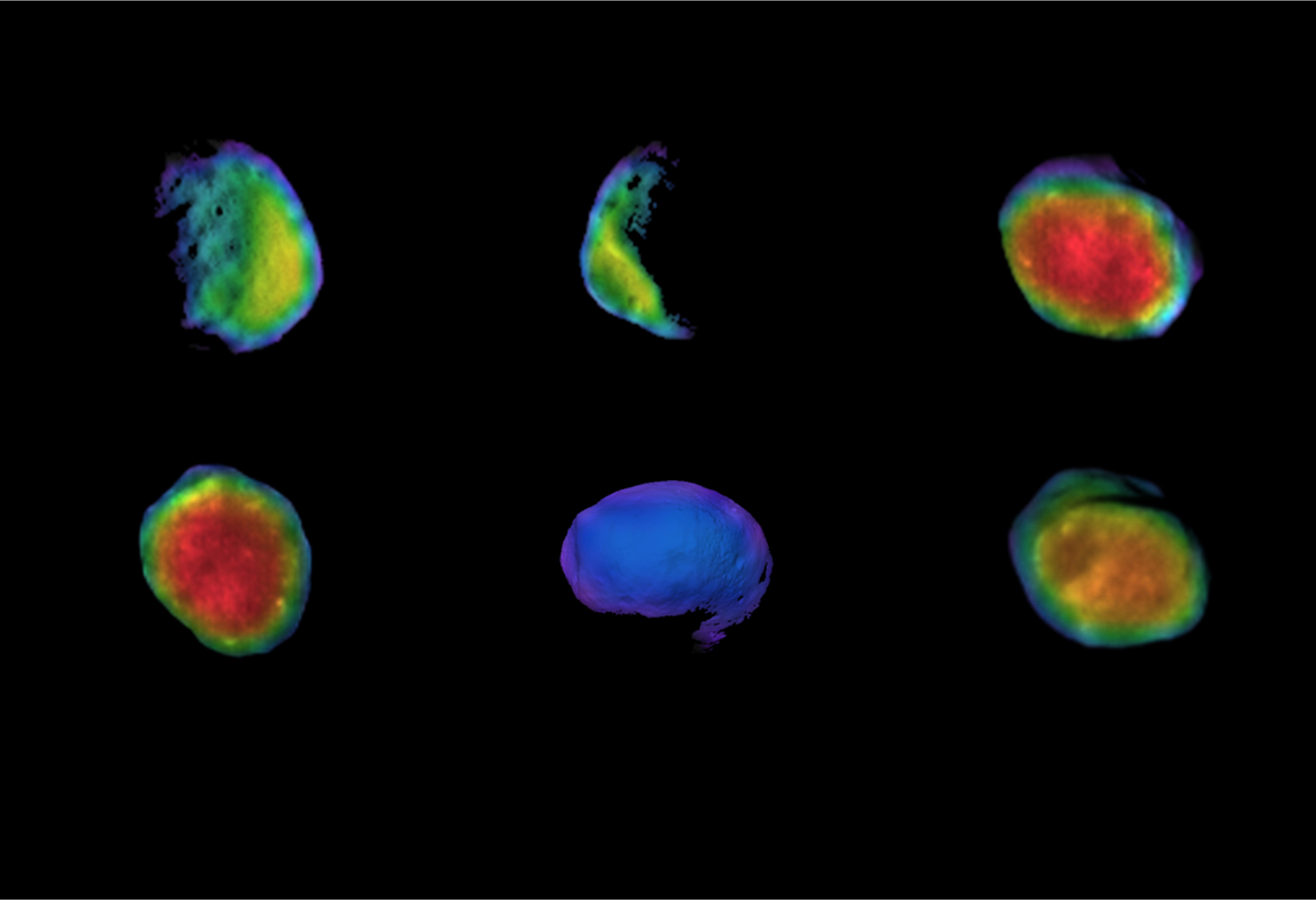As of March 2020, our Mars Odyssey spacecraft has captured these six views of the Martian moon Phobos. The orbiter’s infrared camera, the Thermal Emission Imaging System (THEMIS), is used to measure temperature variations that provide insight into the physical properties and composition of the moon.
Chronologically, the views represent waxing, waning and full phases of the moon. On Feb. 25, 2020, Phobos was observed during a lunar eclipse, where Mars’ shadow completely blocked sunlight from reaching the moon’s surface. This provided some of the coldest temperatures measured on Phobos to date: The coldest measured was about -189 degrees Fahrenheit (-123 degrees Celsius). On March 27, 2020, Phobos was observed exiting an eclipse, when the surface was still warming up.
All of the THEMIS infrared images are colorized and overlain on THEMIS visible images taken at the same time, except for the eclipse image, which is overlain on a computer-generated visible image of what Phobos would have looked like if it wasn’t in complete shadow. Phobos is about 15 miles (about 25 kilometers) across.
Image Credit: NASA/JPL-Caltech/ASU/NAU
截至2020年3月,我们的火星奥德赛航天器已捕获了火星卫星火卫一的这六处景观。轨道器的红外摄像机热发射成像系统(THEMIS)用于测量温度变化,从而了解火卫一的物理特性和组成。
按时间顺序,这些景观代表了月亮的盈亏和满月。2020年2月25日,火卫一在月食期间被观测到,火星的阴影完全阻挡了阳光照射到月球表面。这是迄今为止在火卫一上测量到的最冷的温度:最冷的温度大约是-189华氏度(-123摄氏度)。在2020年3月27日,人们观察到火卫一正在退出日食,当时火卫一表面仍在升温。
按时间顺序排列,这些视图代表火卫一的盈亏和满月。2020年2月25日,在月食时观测到火卫一,火星的阴影完全挡住了阳光,使其无法到达火卫一表面。这提供了迄今为止在火卫一上测得的一些最冷的温度:测得的最冷的温度约为-189华氏度(-123摄氏度)。到2020年3月27日,人们观察到火卫一正在退出日食,当时火卫一表面仍在升温。
所有的THEMIS红外图像都是彩色的,并且覆盖在同时拍摄的THEMIS可见图像上,除了月食图像,它重叠在计算机生成的可见光图像上,显示了如果火卫一不是完全在阴影下的样子。火卫一的直径约为15英里(约25公里)。
影像来源:NASA/JPL-Caltech/ASU/NAU







